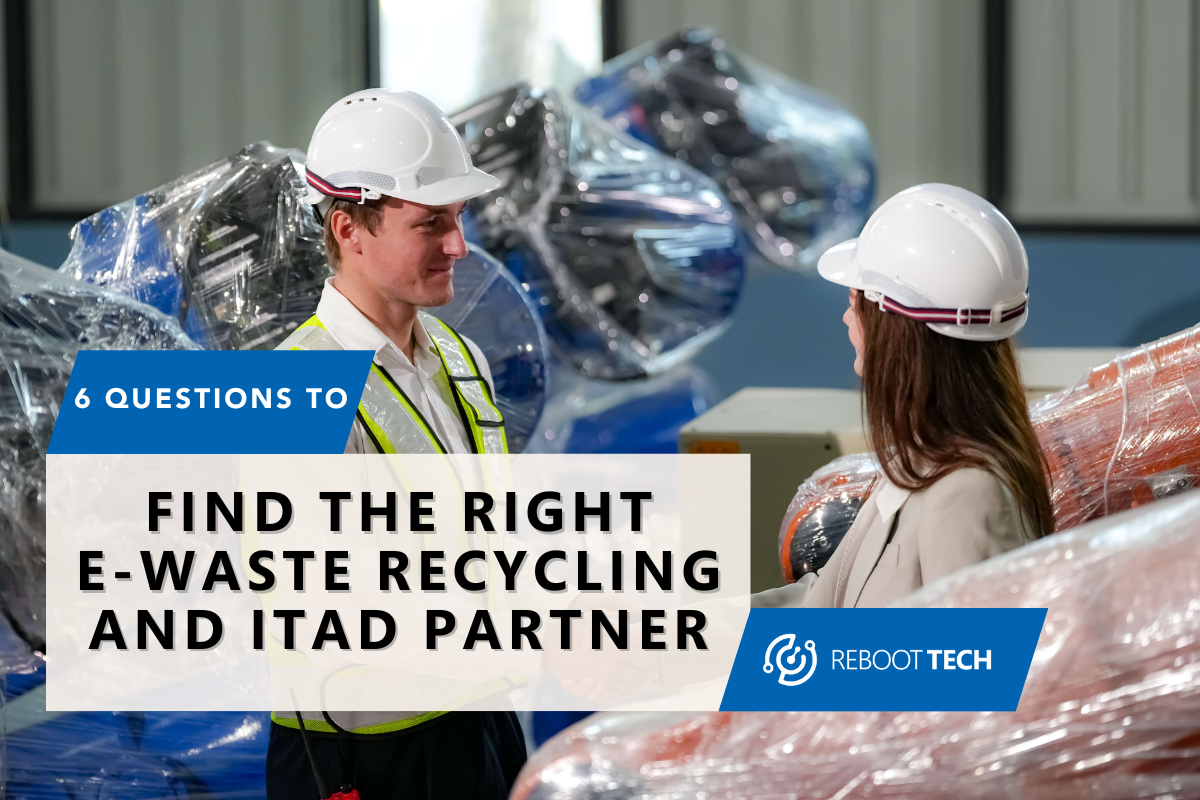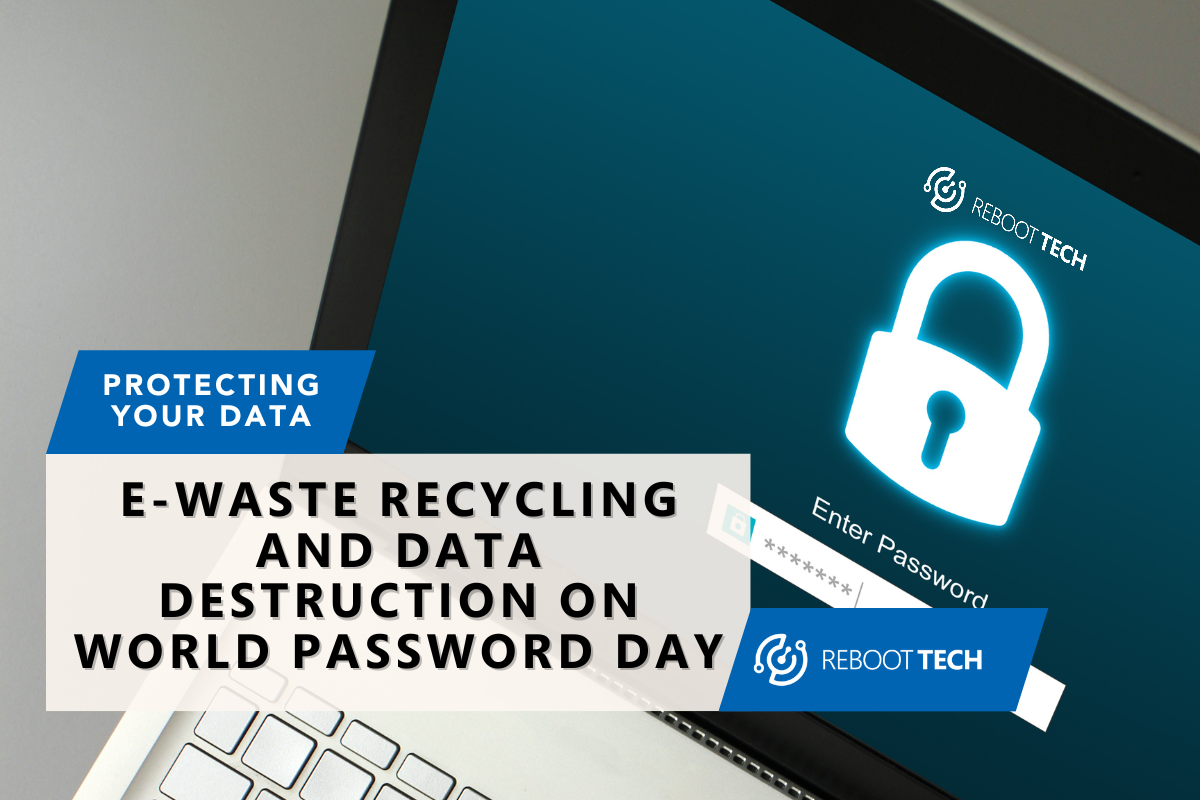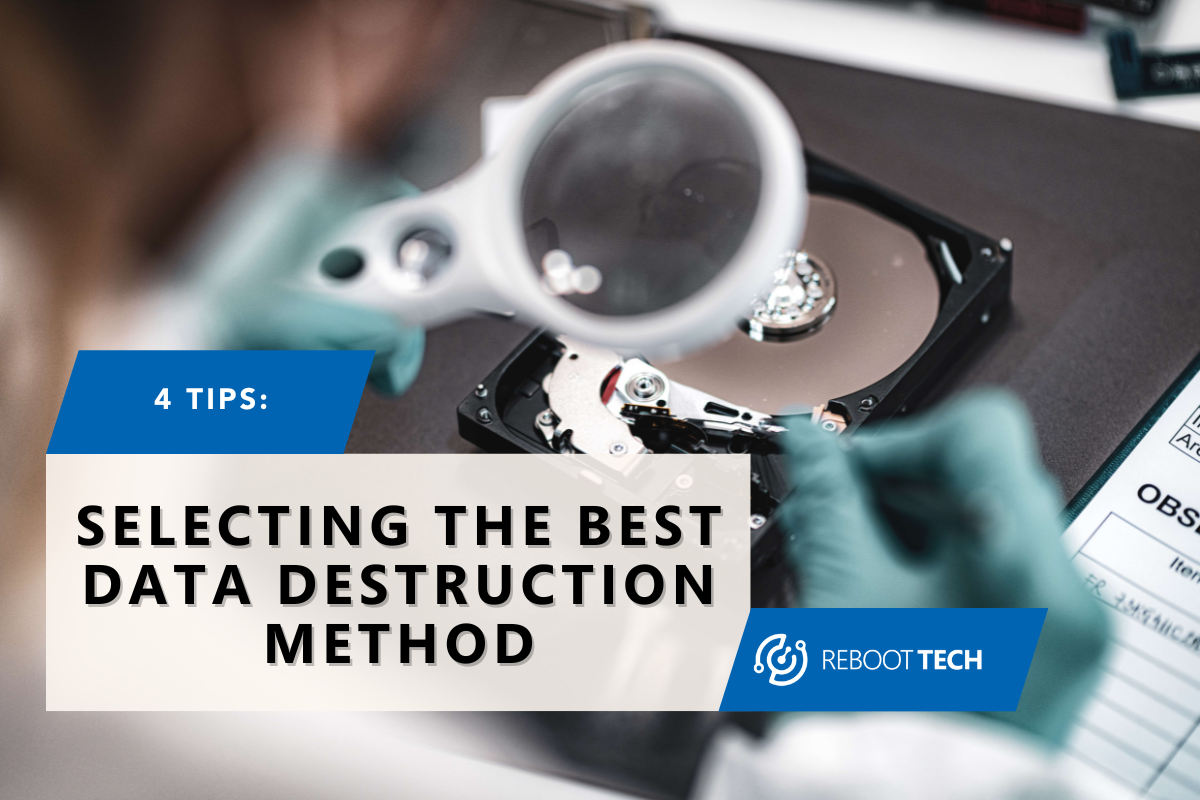
Selecting the Best Data Destruction Method: 4 Expert Tips
Managing data, and protecting yourself from hackers/cyber attacks can seem like a scary thing to deal with. Especially when you want your data destroyed and you don’t know how to properly deal with it or what to look out for.
Electronic waste (e-waste) is our old electronic devices that pile up, which is happening very easily because of how quickly technology is evolving these days. So, you want to get rid of that of course, but you don’t want your data to be accessed and end up in a worse situation.
We understand all these concerns, but this is where we’re here to help! There are many places out there that do certified data destruction, you just need to know what to look out for and want what you need. In this blog, we’ll cover why secure destruction is important, what each method does, and four tips on finding which method and partner to go for.
Why is Data Destruction Important?
Data destruction involves permanently erasing or rendering data unreadable to ensure that sensitive information does not fall into the wrong hands. Whether it’s customer records, financial data, or proprietary information, failing to properly dispose of data can lead to severe consequences, including data breaches, regulatory fines, and damage to reputation.
Proper data destruction is also good because we need to get rid of our electronic waste (e-waste). Many companies struggle with managing this because our devices keep getting outdated due to how quickly technology is evolving. E-waste can harm human health and the environment a lot if you don’t know what you’re doing.
This is the benefit of working with certified recycling companies that know how to dispose of those things correctly. There are many other benefits to it as well, but it’s a side benefit to data destruction. But how do we deal with proper data destruction?
There are many data destruction methods out there that can cater to your needs. There’s no “right” data destruction method as they all have their benefits depending on what your business is looking for. Let’s start with degaussing.
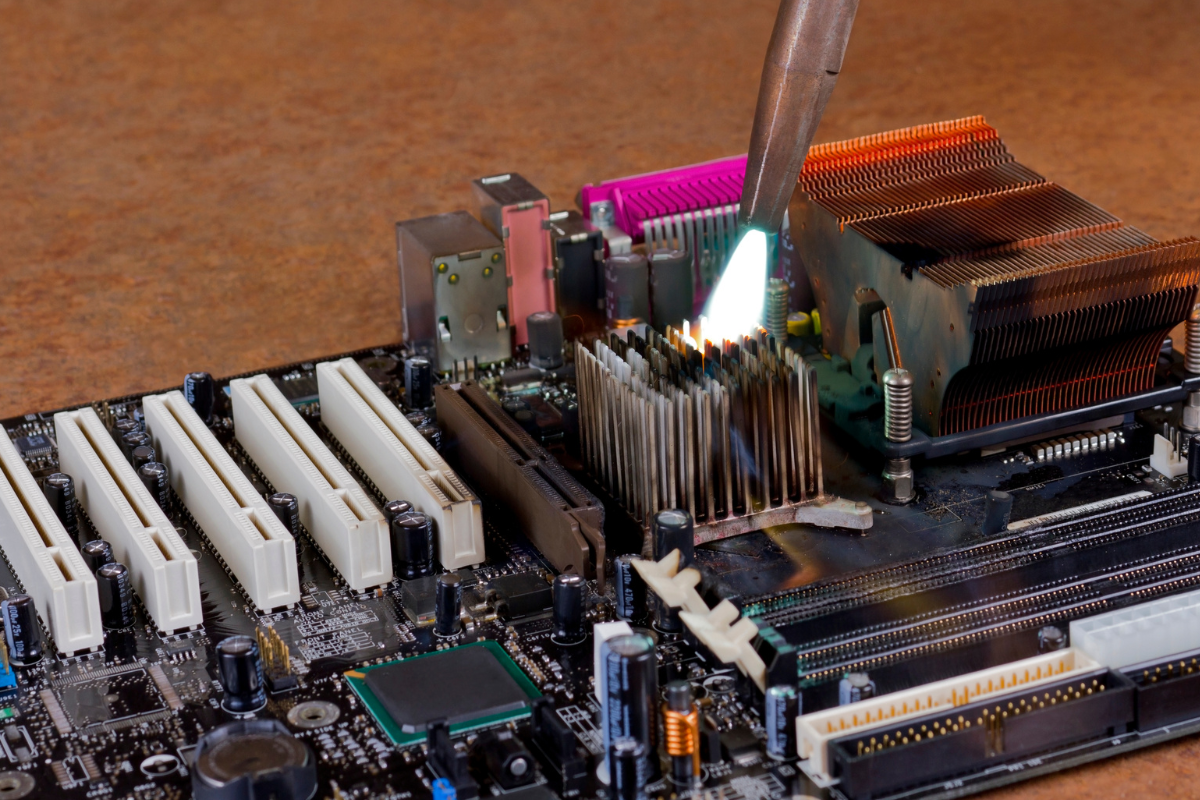
Degaussing
Degaussing, an important data destruction method, helps securely dispose of sensitive information on magnetic media like hard drives and tapes. By using a strong magnetic field, degaussing erases stored data, making it impossible to recover. This is crucial for protecting confidential data from unauthorized access, especially in industries where data security is critical.
Compared to other data destruction methods, degaussing ensures thorough data erasure without leaving traces that could be retrieved. For example, in education, where student records and research data are common, degaussing is an effective way to safeguard this information. Educational institutions can use degaussing services to dispose of old hard drives containing sensitive data, preventing any risk of data leakage.
Additionally, degaussing offers environmental benefits by enabling the reuse or recycling of magnetic media devices. Unlike shredding, which creates electronic waste, degaussing allows for safe disposal without contributing to pollution. In education, institutions can partner with certified e-waste recycling companies offering degaussing services, ensuring data security and environmentally responsible device disposal. This aligns with the institution’s sustainability goals.
Overwriting
Overwriting is a way to erase data by replacing it with random characters or patterns. It’s like scribbling over words on a page to make them unreadable. This helps keep sensitive information safe on devices like hard drives and solid-state drives, so no one can access it without permission.
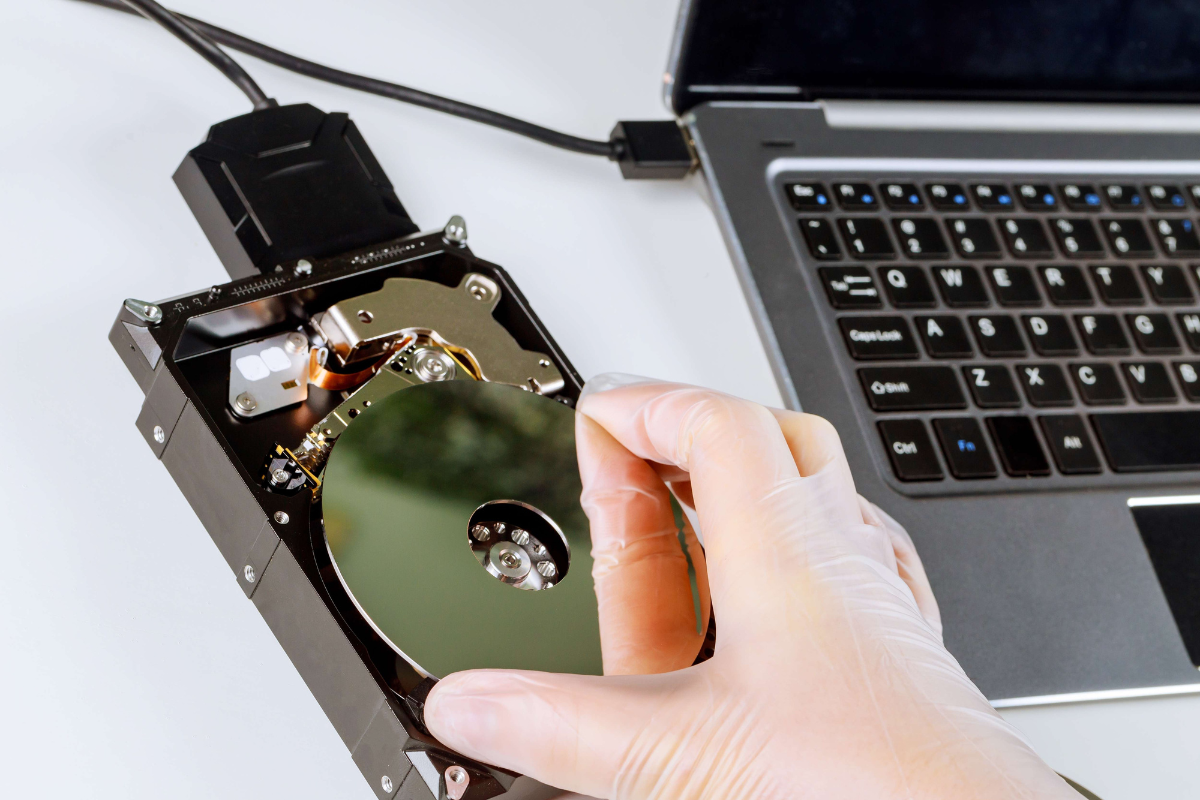
One big advantage of overwriting is how easy and effective it is. Unlike breaking the device, overwriting lets you reuse it afterward. This is great for both businesses and individuals because it means you can get more use out of your devices while still keeping your data secure and following privacy rules.
In industries like finance, healthcare, and law, where privacy is super important, overwriting is a lifesaver. It helps keep data safe from hackers, protects client secrets, and follows all the rules. Plus, it’s a budget-friendly and eco-friendly way to manage your tech stuff.
Physical destruction
This method is exactly what it sounds like! Here your devices get physically shredded. Unlike other methods like overwriting or degaussing, which try to erase data electronically, physical destruction makes sure the data is completely gone. This is super important, especially for stuff like patient records in healthcare.
In healthcare, patient data is really sensitive because it has info about medical history and treatments. To keep this data safe and follow rules like HIPAA, healthcare places often use physical destruction to get rid of old hard drives and servers. By breaking these devices, they make sure patient data stays private and safe from hackers.
Plus, physical destruction gives a clear sign that the data is gone for good. This helps both businesses and regular people feel better knowing their info is safe. In industries where data safety is super important, like healthcare, physical destruction is a key part of keeping info secure and protecting against hackers.
Tip 1: Consider Compliance Requirements
One of the first steps in choosing the right data destruction method is to consider compliance requirements. Different industries and regions have specific regulations governing data privacy and security. Ensure that the method you choose aligns with these regulations to avoid potential legal liabilities.
If you’re in the United States, there are several different compliances per state that you need to follow regarding data disposal. In California, businesses need to shred, erase, or modify personal information when disposing of customer records. In Arkansas, a person or business has to take reasonable steps to destroy a customer’s records within its custody when it’s no longer retained by the person or business by shredding it. Those are just some of them, but you can read up on the other compliances here.

Tip 2: Evaluate Security Needs
Security is another crucial factor to consider when selecting a data destruction method. Evaluate the sensitivity of the data you handle and the potential risks associated with unauthorized access. Depending on your security needs, you may opt for methods like shredding, degaussing, or data wiping.
Are you in the healthcare industry? Legal field? The entertainment industry? Whatever industry your business is involved in, you probably have to rely on technology to help run it, but it depends on the level of security you need.
Something like patient records in the healthcare space might have to be more delicate to protect information than if you’re in retail. Of course, you need to protect your data no matter what, but depending on how sensitive the information is, will dictate what destruction method you will have to go with.
Tip 3: Consider Data Volume
This is important because when you’re looking for a partner that deals with this stuff, you want to consider how often you would require their services. Some places might offer better deals if you want to work with them consistently and long-term, versus a one-time drop-off of electronics.
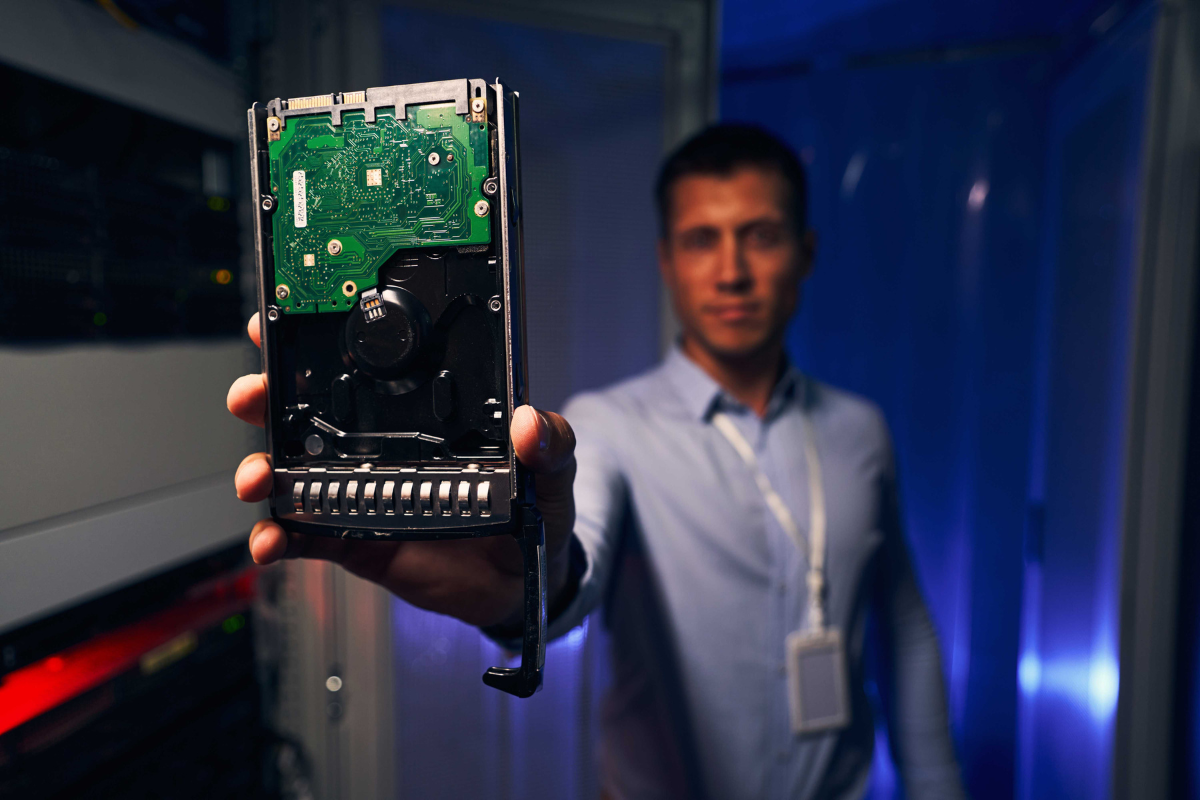
If your business is always getting rid of old info, you’ll want a method that can handle lots of data destruction cycles smoothly. Methods like overwriting or degaussing might be the way to go for regular data clean-ups, letting you wipe data whenever you need to without messing up your workflow.
By thinking about things like how much data you have, how sensitive it is, and how often you need to bin it, you can pick the best way to destroy your data while following the rules and keeping everything secure.
Tip 4: IT Asset Disposition
Lastly, an efficient way to dispose of your data is through IT Asset Disposition (ITAD). This is an excellent method because not only does your data get disposed of, but your IT Assets are protected as well. This means that your electronics will be disposed of in an environmentally friendly way while making sure that you’re safe from cyber attacks.
There are many other benefits that follow ITAD as well, such as cost savings, efficient management, and your business will be kept up to date with compliances!
Consider Reboot Tech
Lastly, after you consider all those tips and what you need out of data destruction, consider working with Reboot Tech! Here, we specialize in data destruction and cater to whatever you needs you require.
Our services also offer purchasing of electronic surplus, IT Asset Disposition, e-waste recycling, and of course, data destruction. If you want to work with us for those services simply send us a call at: (909) 297-1355.
Selecting the right data destruction method is essential for safeguarding sensitive information and maintaining regulatory compliance. By considering factors such as compliance requirements, security needs, data volume and type, and documentation, you can make an informed decision that protects your data and your business. Together, we can create more sustainable business practices and protect our environment.





